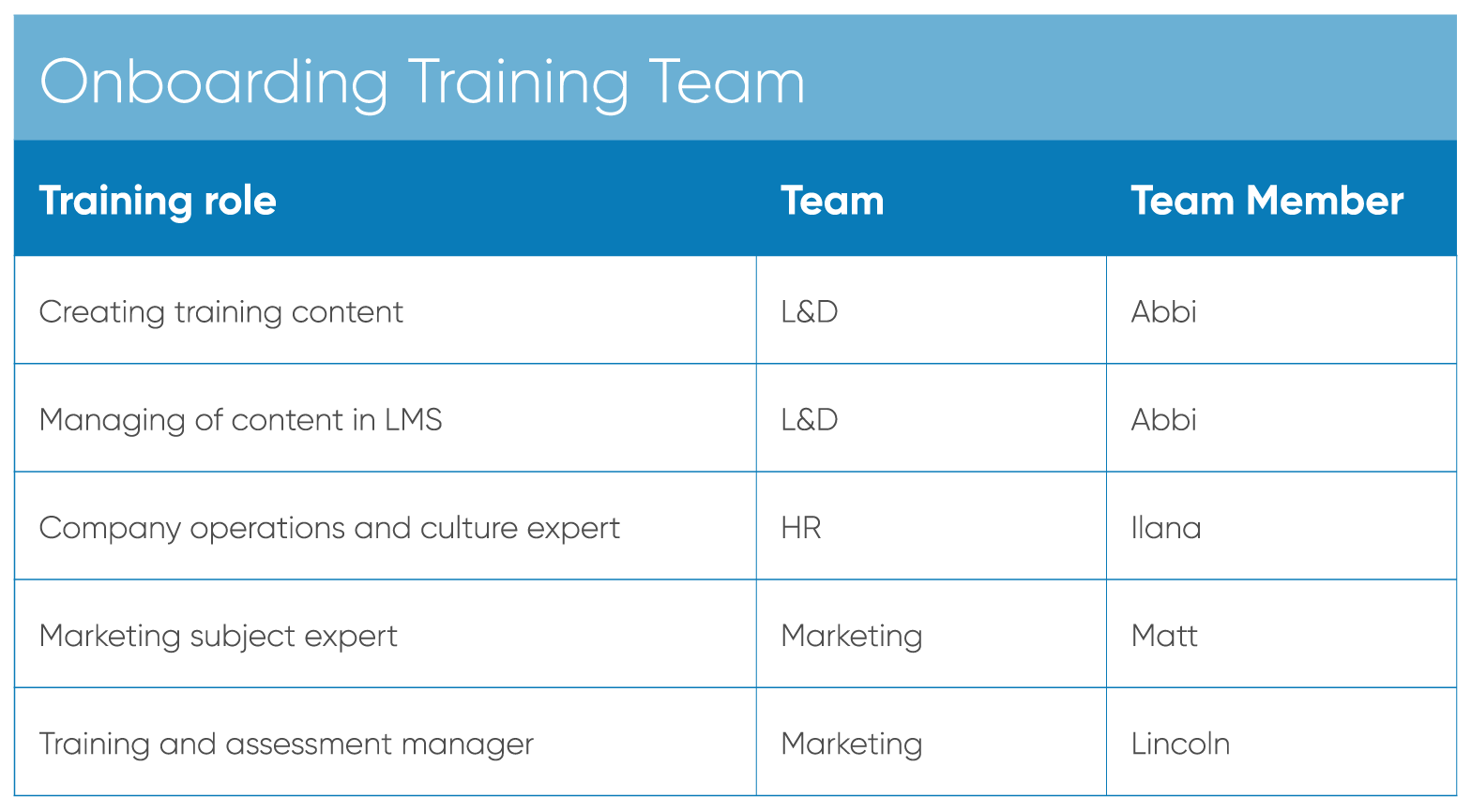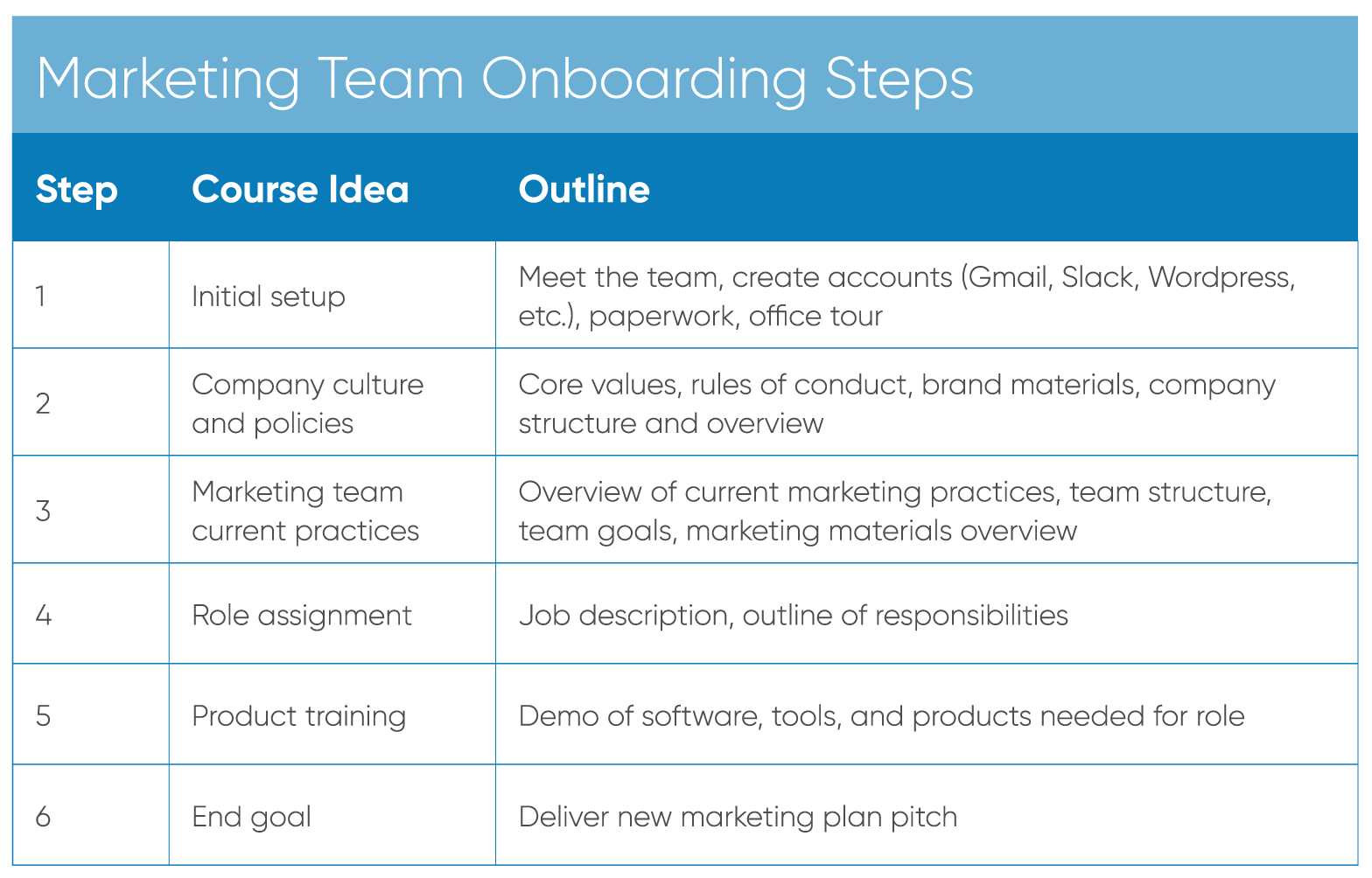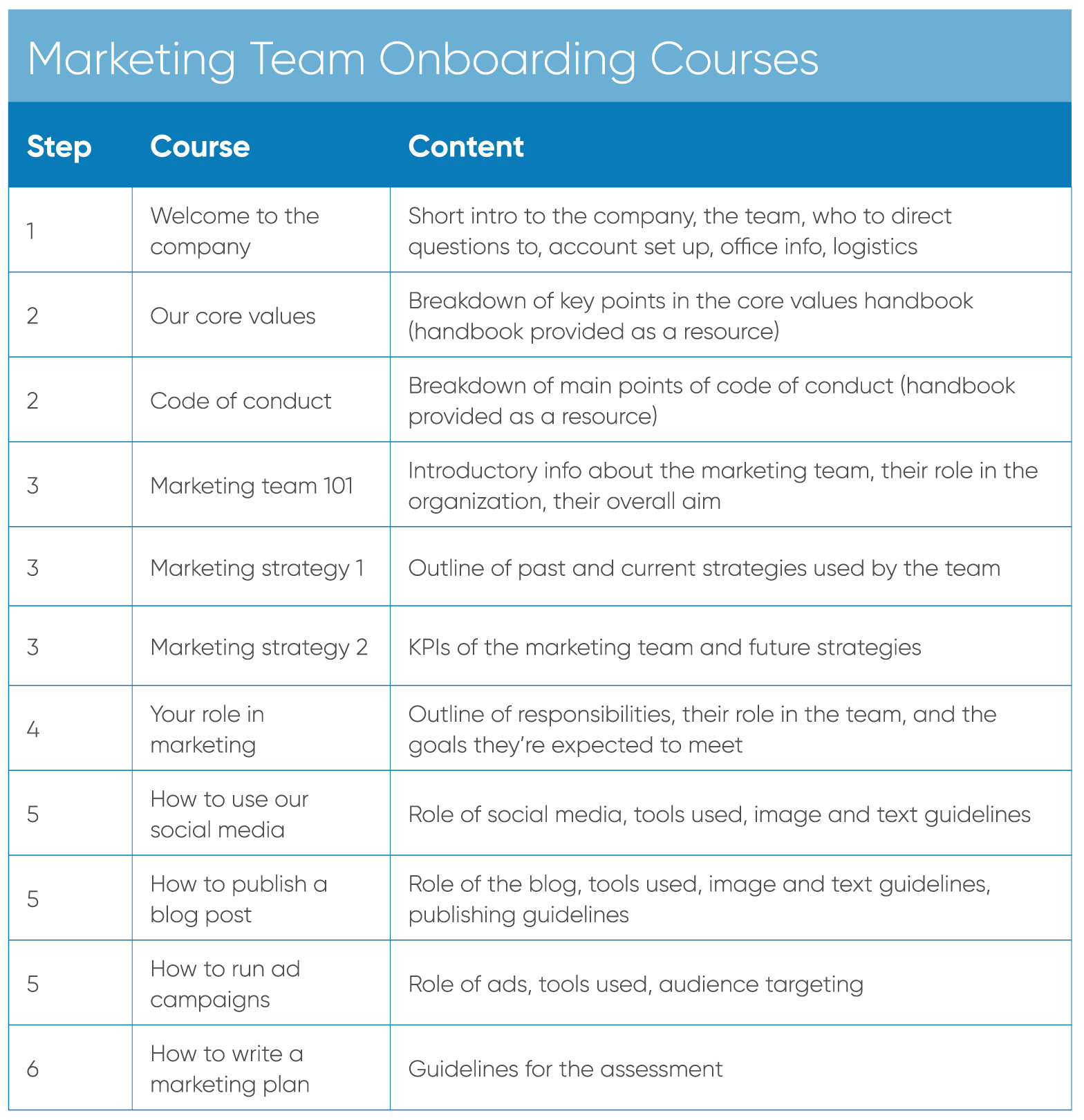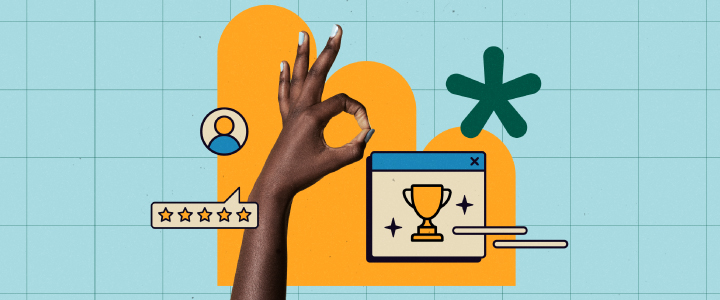
5 min reading time
How to Develop an Employee Onboarding Plan
Onboarding encompasses a lot of things. There’s so much for your team to consider and implement and a lot of information for your new hire to take in. It can be overwhelming. This is where an employee onboarding plan comes in. Think of it as a blueprint that outlines every aspect and eventuality of the onboarding process.
Download the eBook
Discover how to get more out of your onboarding. Download the eBook “Build an Employee Onboarding Program with a Learning Management System” and get straight-forward advice on how to plan, create, and deliver a successful employee onboarding strategy for your organization. 
6 Steps To Develop an Onboarding Plan
1. Know your employee onboarding goal
Before you jump in and plan content, it’s important to know why you’re onboarding your employees – what is the goal? Commonly, the aim of onboarding is to “acquire the necessary knowledge, skills, and behaviors in order to become effective organizational members and insiders.” But what does this actually mean for your business? It’s essential to have concrete goals for what you want to achieve. This should encapsulate:
- Setting expectations for the learner
- Outlining the skills your learner should gain through onboarding
- Establishing a clear company culture/code of conduct for the new hire
If you’re training a salesperson, the goal could be that after 90 days of onboarding training they need to deliver a demo to their team that reflects your business’s practices and style. Or using a marketing team example, let’s say the goal could be for a learner to pitch a new marketing campaign. For some roles, the goal might be obvious, others not so much.
If you’re struggling, do some research. Ask team members and managers at what point they considered themselves part of the company. Also, ask when do they consider new team members successfully integrated into the organization. Setting this final goal enables you to develop a strong onboarding strategy. Your new employee is also more likely to understand what your expectations are. And in turn, this will support them in completing their training.
2. Create your onboarding training team
The next step to building an eLearning onboarding strategy is to figure out who’s involved. Depending on your company size, structure, and role, this varies. For some, it’s an HR, L&D or Training & Development task with little to no input from anyone else. Others see it as a group effort with managers, HR, and co-workers all involved.
The most impactful onboarding should be a group effort, bringing together all factions of your business. To make this guide as helpful as possible, I’m going to use the example of how a company might onboard new marketing hires.
 Using a spreadsheet (or a project management tool like Asana or Trello if you prefer), we’re simply noting the tasks to be done. We are also noting the team that’s undertaking each task and the person responsible. The level of involvement for each person can be big or small. As long as you identify the key players and they know their roles, you’re off to a good start.
Using a spreadsheet (or a project management tool like Asana or Trello if you prefer), we’re simply noting the tasks to be done. We are also noting the team that’s undertaking each task and the person responsible. The level of involvement for each person can be big or small. As long as you identify the key players and they know their roles, you’re off to a good start.
3. Invest in the right tools
Team members, content, timelines – these are all significant aspects to plan when onboarding. But, one of the most important is planning for the tools you will be using to onboard your new hires and how these affect the onboarding journey. It’s essential to think about the tools you’ll need (like an HR system) to collate resources and engage with the employee. Are you also going to get an LMS to deliver onboarding training? Or go for a blended learning model with a mix of face-to-face and online training?
Then there is content creation – do you need additional tools and resources to build onboarding content? Not every tool is a must have, so when planning your onboarding get into the nitty-gritty of the tools you’ll actually need so that you create the most valuable experience for your employees.
4. Map your onboarding steps
With your team and goal established, now you can map out an onboarding strategy to nurture your new hires to their goal. The simplest and most successful method to do this is to create learning steps or “mini” goals. These, when put together, build a path to the end goal. These steps should be incremental, each building on the last to create a focused strategy. For our marketing example, here’s a flow that we’d create for our new hires.

These steps can be a mix of online training and face- to-face. Some may last a few hours while others might take days or weeks to achieve. But, as you can see, they create a clear path to your learner hitting that all important end goal. If possible put a timeline against these steps and try to establish how long the process will take. For each employee and team, this might be different, but understanding the time needed to train, will help you create a more efficient, structured strategy.
5. Plan your onboarding eLearning courses
With your steps in place and there to guide you, it’s time to crack on with course content. Content is often seen as an overwhelming aspect of any training, but it needn’t be. As with our customers, we recommend you think about your audience first. Put yourself in their shoes and ask:
- What do they need to know?
- What do I want them to learn?
- What is their baseline knowledge?
- What do I want them to be able to demonstrate by achieving their goal?
From here, go to your subject experts. They can provide you with all the necessary resources to deliver training at each step. Look internally at your team and the resources you have on hand. You’ll likely find you already have a lot of the content you need. For example, company culture guides and rules of conduct are usually standard across an organization. These can be used in your onboarding. And for our marketing onboarding, there’s eBooks, demos, webinars, blogs, etc. All perfect for repurposing! With our marketing hire example, we end up with a course structure like this:

Crucially, don’t front-load your learners with information. One mistake we’ve seen is new hires being handed a bulky manual to read. And while that’s a great resource, digesting all that info at once is overwhelming. Instead, pull out the key elements. You can structure your courses around these smaller, essential learnings. That way your learner isn’t bombarded and they’re more likely to retain the information they need.6. Know how you’ll measure your KPIsThe last stage in planning an onboarding strategy is knowing your KPIs and how you plan to measure them. So many businesses skip this step. They develop a comprehensive onboarding plan, then don’t have specific KPIs and have no way to measure its success.
Depending on your goals, you can have a number of KPIs. Most common are return on investment or time vs. effort. There are lots of ways to measure these including cost per new hire onboarding, retention rates, or efficiency of the onboarding process. Whatever it may be, know what you want to measure and have a plan of action in place so your team will know the true value of onboarding.



